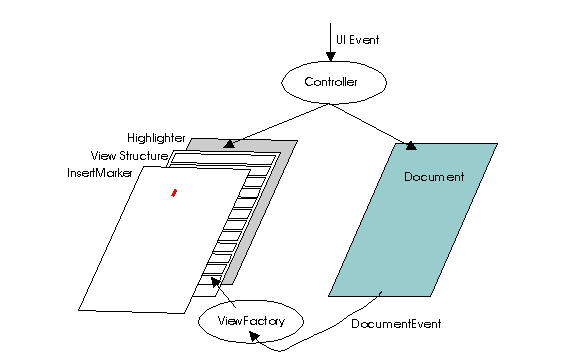Text components provide a number of commands that can be used to manipulate the component. This is essentially the way that the component expresses its capabilities. These are expressed in terms of the swing Action interface, using the TextAction implementation. The set of commands supported by the text component can be found with the getActions method. These actions can be bound to key events, fired from buttons, etc.
To facilitate flexible use of the keyboard, support for creating keymaps and binding various keystrokes to some kind of action is provided. In order to allow keymaps to be shared across multiple text components, they can use actions that extend TextAction. TextAction can determine which JTextComponent most recently has or had focus and therefore is the subject of the action (In the case that the ActionEvent sent to the action doesn't contain the target text component as its source).
The use of the keymap is encouraged, but backward compatibilty with the awt mechanism is provided by giving the listeners a chance to steal the event by consuming it. Keyboard event distribution is handled in the following order, with each distribution capable of consuming the event.
- focus manager
- registered KeyListener's
- keymap handling using the current keymap
- keyboard handling in JComponent (e.g. accelerators, component navigation, etc.).
By default the component will create a keymap (named DEFAULT_KEYMAP) that is shared by all JTextComponent instances as the default keymap. Typically a look-and-feel implementation will install a different keymap that resolves to the default keymap for those bindings not found in the different keymap. The minimal bindings include:
- inserting content into the editor for the printable keys.
- removing content with the backspace and del keys.
- caret movement forward and backward
The text components have a model-view split. A text component pulls together the objects used to represent the model, view, and controller. The text document model may be shared by other views which act as observers of the model (e.g. a document may be shared by multiple components).

The model is defined by the Document interface. This is intended to provide a flexible text storage mechanism that tracks change during edits and can be extended to more sophisticated models. The model interfaces are meant to capture the capabilities of expression given by SGML, a system used to express a wide variety of content. Each modification to the document causes notification of the details of the change to be sent to all observers in the form of a DocumentEvent which allows the views to stay up to date with the model. This event is sent to observers that have implemented the DocumentListener interface and registered interest with the model being observed.